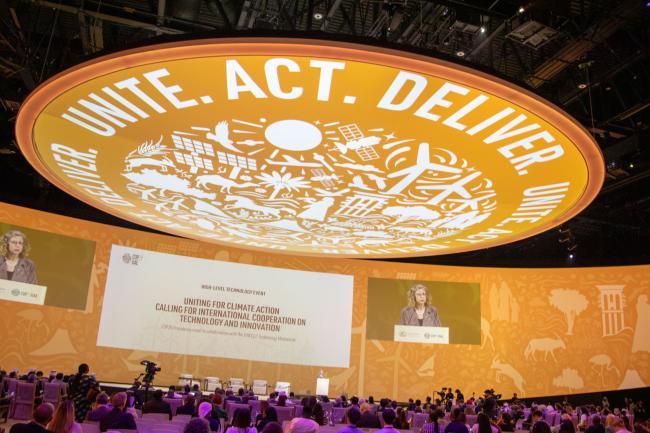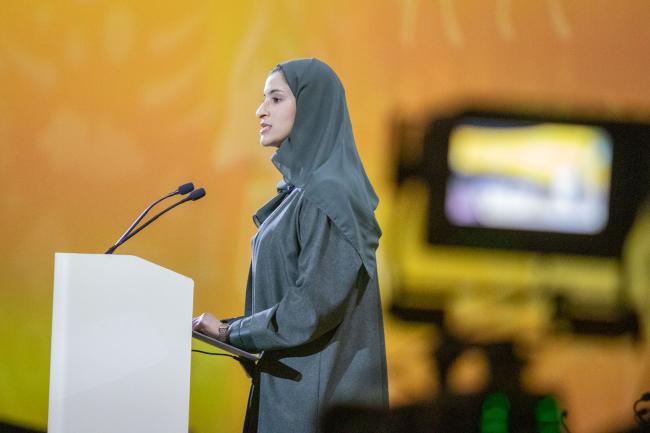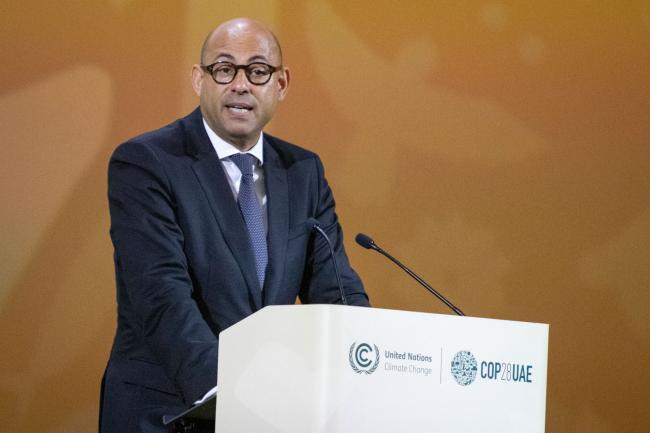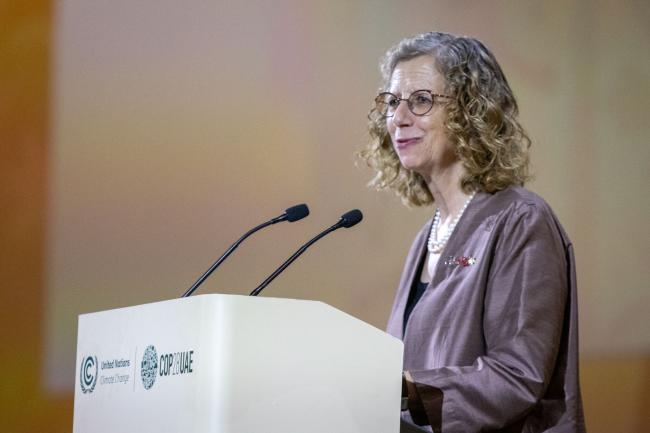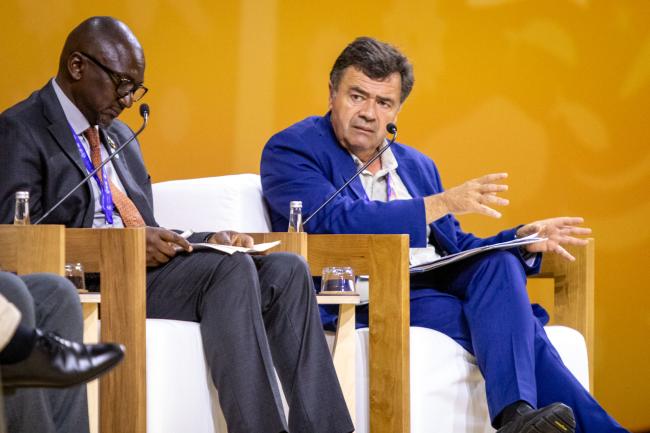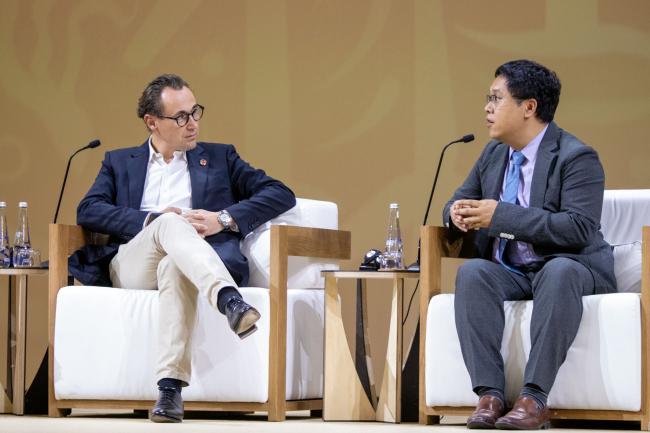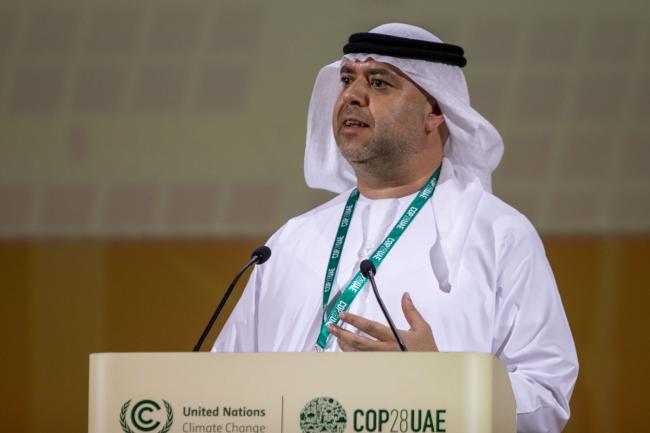About
Technology plays a critical role in reducing greenhouse gas emissions and adapting to the impacts of climate change around the world. The UNFCCC's Technology Mechanism accelerates and enhances the development and transfer of climate technologies to achieve the goals of the Paris Agreement.
Technology plays a critical role in reducing greenhouse gas (GHG) emissions and adapting to the impacts of climate change around the world. The UN Framework Convention on Climate Change’s (UNFCCC) Technology Mechanism accelerates and enhances the development and transfer of climate technologies to achieve the goals of the Paris Agreement. It comprises a policy arm, the Technology Executive Committee (TEC), and an implementation arm, the Climate Technology Centre and Network (CTCN). This event focused on the need to strengthen international cooperation in technology development and transfer through the Technology Mechanism. It also highlighted the work of the first year of its Joint Work Programme (JWP), which is composed of the joint activities and common areas of work of the TEC and CTCN and will run from 2023-2027.
Moderator Dena Almansoori, Founder and CEO, WhiteBox, opened the event by describing the history of the Technology Mechanism, which was established in 2010. She also highlighted the TEC-CTCN Artificial Intelligence (AI) for Climate Action initiative, which aims to explore the role of AI to advance and scale up climate solutions for mitigation, adaptation, and resilience, particularly for the most vulnerable communities under the JWP.
In opening remarks, Sarah Al Amiri, Minister of State for Public Education and Advanced Technology, United Arab Emirates (UAE), reminded that GHG emissions must be cut by 43% in the next seven years to keep warming below 1.5°C, and that this goal will not be reached if “every single technological lever” is not pulled and shared with the global South. She pointed to the Innovate for Climate Tech Coalition, a new initiative launched at COP 28 to support the development and adoption of climate tech solutions, with a focus on the global South.
Simon Stiell, Executive Secretary, UNFCCC, said climate action is driven by “two strong forces,” political commitments and technological advances, and that while technology is developing at a rapid pace, “our political commitments are lagging far behind.” After praising the work of the JWP in its first year, he called for “more engagement, more cooperation by all actors.”
Inger Andersen, Executive Director, UN Environment Programme (UNEP), said that, from UNEP’s perspective, technology has to be part of the “solutions package” for mitigation and adaptation needs, such as resilient infrastructure, sustainable mobility, and decarbonized energy systems. Noting that UNEP hosts the CTCN, she warned the latter is “woefully underfunded” and called for countries to “step in” and support it.
In a panel discussion on key levers in technology for climate action, Collins Nzovu, Minister of Green Economy and Environment, Zambia, said leveraging technology was key to addressing challenges faced by his country, including in the areas of food and water scarcity. He noted collaborations with the UNFCCC on various projects, highlighting difficulties in scaling these up. He then warned “technologically-advanced” countries that technology transfer is essential: “You will not advance if you leave us behind,” he added.
Esteban Valenzuela, Minister of Agriculture, Chile, underscored the importance of the agriculture sector in his country’s climate strategy, noting its pivotal role in building climate resilience, as well as of technology in its development model. He described a long tradition of public-private partnerships in both economic and agricultural policies.
Hao Xu, Tencent, as one of three anchors of the Innovate for Climate Tech Coalition, said the Coalition’s goal is to accelerate innovation around climate technology. He noted the Coalition seeks to be a “truly global program,” which develops technology in appropriate places locally, and then markets it globally to accelerate its development. He also pointed to the development of a digital platform which would match “demand and supply,” namely startups with investors and solutions with users.
Thomas Guillot, Chief Executive, Global Cement and Concrete Association (GCCA), described GCCA’s work in decarbonizing the cement industry, highlighting the GCCA 2050 Cement and Concrete Industry Roadmap for Net Zero Concrete. He said cooperation with the CTCN and other international mechanisms offered benefits in terms of improving the scalability and compatibility of each solution to local countries.
In a closing statement, COP 28 Director-General Ambassador Majid Al-Suwaidi described his professional experience as a “technology negotiator,” including on the CTCN. Noting the COP 28 Presidency’s commitment to technology as part of the climate solutions, he called for the rapid deployment of technology in areas of the global South where emissions are rising rapidly. He concluded by pointing to the United Arab Emirates Declaration on a Global Climate Finance Framework, which aims to mobilize USD 250 billion in private sector investment by 2030 for climate action.
Organizers: COP 28 Presidency and the UNFCCC Technology Mechanism
Contact: Doreen Nanyaro I doreen.nanyaro@un.org
For more information: https://unfccc.int/ttclear/support/technology-mechanism.html
To receive free coverage of global environmental events delivered to your inbox, subscribe to the ENB Update newsletter.
All ENB photos are free to use with attribution. For this COP 28 side event, please use: Photo by IISD/ENB | Matthew TenBruggencate.

